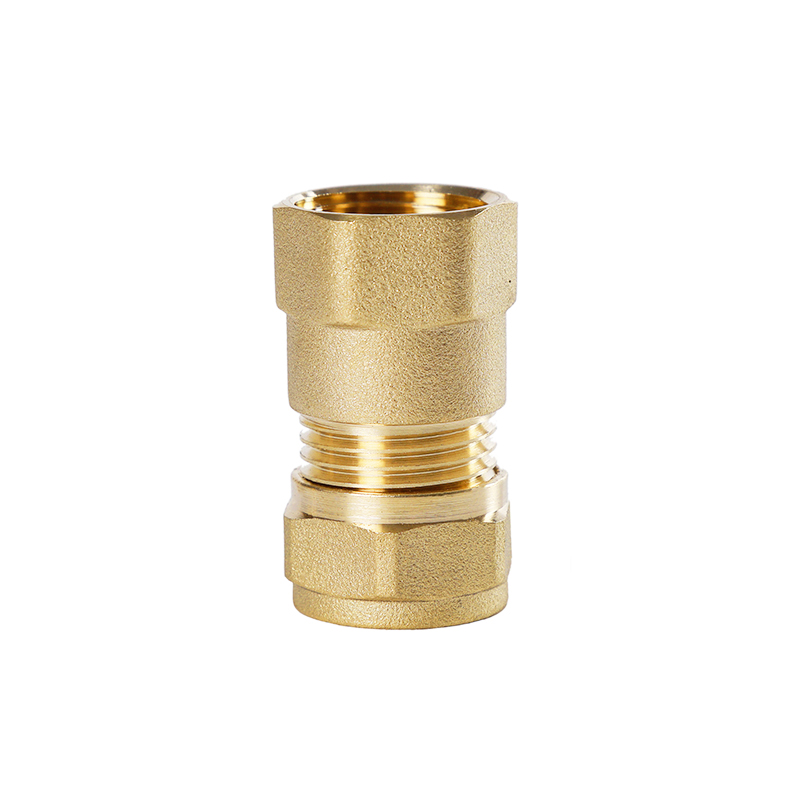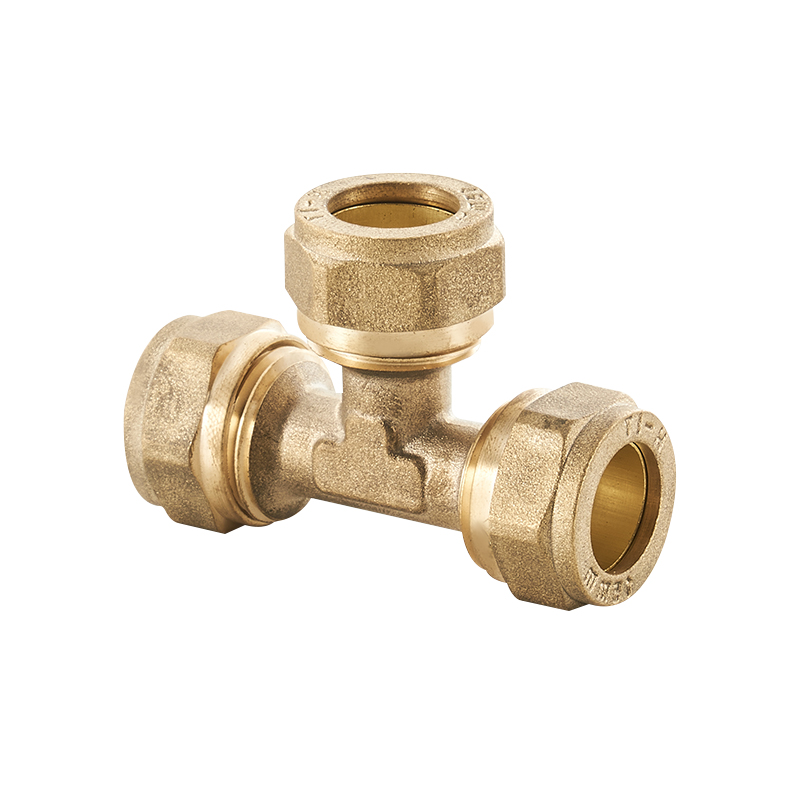Female Straight Brass Compression Fitting For Copper Pipe
Optional Specification

Product Information
| Product name | Brass forged Equal Tee compression Fittings | |
| Sizes | 15x1/2”, 18x1/2”, 22x3/4” | |
| Bore | Standard bore | |
| Application | Water, oil, gas, and other non-corrosive liquid | |
| Working pressure | PN16 / 200Psi | |
| Working temperature | -20 to 120°C | |
| Working durability | 10,000 cycles | |
| Quality standard | ISO9001 | |
| End Connection | BSP, NPT | |
| Features: | Forged brass body | |
| Precise dimensions | ||
| Various sizes available | ||
| OEM production acceptable | ||
| Materials | Spare Part | Material |
| Body | Forged brass, sandblasted | |
| Nut | Forged brass, sandblasted | |
| Insert | Brass | |
| Seat | copper ring | |
| Stem | N/A | |
| Screw | N/A | |
| Packing | Inner boxes in cartons, loaded in pallets | |
| Customized design acceptable | ||
Optional Materials
Brass CW617N, CW614N, HPb57-3, H59-1, C37700, DZR, Lead-free
Optional Color and Surface Finish
Brass natural color or nickel plated
Applications
Fluid control system for building and plumbing: Water,oil, Gas, and other non-corrosive liquid
Brass fittings is made of forged brass or machined from brass bar, designed to connect hose pipes and other pipeline applications. Peifeng is a professional China brass fittings manufacturer and supplier.
Precautions for installation of brass compression fittings:
(1) Be sure to mark with a marker (one, workers can determine whether they are screwed in place, and second, it is convenient for management personnel to check.
(2) Do not over-tighten the nut, especially the small-sized compression joint of ≤ 1/2", because it is easy to fasten, so it is easy to over-tighten. If it is over-tightened, it may damage the thread and compression, or even damage the TUBE tube , forming a leakage hazard.
(3) Pay attention to the type (or standard) of the thread when using a crimping joint with a threaded end. It is NPT (60° tapered pipe thread, commonly used in American standard products), PT (55° tapered pipe thread, commonly used in China, and also used in Japan). more), or other types.
(4) Do not install and tighten the compression joint when the pipeline is under pressure.
(5) Do not mix press fitting parts (joint body, nut, press fitting) of different materials or brands.
(6) When tightening the compression joint, do not rotate the joint body, but fix the joint body and turn the nut.
(7) Avoid unnecessary disassembly of unused crimping joints (the warehouse keeper can take one or two crimping joints of different specifications when receiving the goods, and disassemble them to check whether the front and rear crimping joints are installed reversely).
(8) Ensure that the surface of the compression joint is clean (the inner packaging plastic bag can only be disassembled during installation), and the open joint should be sealed at any time during the installation process (dust-free tape can be used).
(9) When installing the compression joint at the elbow, it must be ensured that the straight pipe section L is not less than the value in Table 1. Because after the pipe is bent, the surface of the TUBE pipe that is closer to the elbow will become more uneven. If the compression joint is too close to the elbow, the sealing effect will be poor and there will be a hidden leakage. In addition, the pipe must be bent first, and then the crimping joint is installed, and the pipe cannot be bent after the crimping joint is installed.
Contact Us








